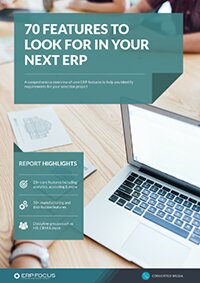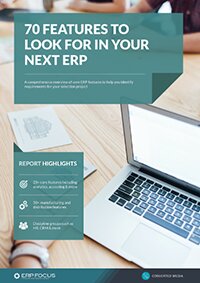How an ERP supplier portal makes your business run more smoothly
Every business should aim to be easy to do business with. If one looks for that phrase online there are lots of examples related to selling and customer service. A supplier portal can help make your business easy to sell to. And don’t we all want happy suppliers who might give better service, lower prices, and better delivery?
Streamlined workflows
Traditionally a supplier sends an invoice which is delivered in the mail. Someone in your business opens the mail and routes a document that looks like a supplier invoice to accounts payable in the finance department. Now another person enters an ERP transaction trying to link that document with a purchase order and a receipt of the goods or service. Using a portal, your suppliers could uplink their invoice directly to accounts payable and connect it with the purchase order and packing slip for you. The supplier knows the document is delivered where it needs to be and you saved time.
Improved communications
You desperately need something right now. You placed the order late and production is waiting to complete work that your customer wanted yesterday. You could call or email your supplier and ask if shipped yet. Or, you could simply look at your ERP supplier portal and see the supplier posted the shipment ID number, the method of shipment, and a tracking number with a link to the carrier’s site where the exact status of the shipment can be found. It was delivered two minutes ago. Send the forklift to the receiving dock and get that order on its way!
Find ERPs with supplier portals using our free software comparison tool
Collaboration
Some businesses choose to use ERP supplier portals to communicate planning data such as actual or forecasted demand to suppliers. This gives the supplier an opportunity to produce components or order sub-components ahead of a purchase order. When you and your supplier trust each other, the wheels are already greased.
You have a new product in design now. Send drawings and other documentation through your ERP supplier portal. Using a single channel for communications makes things easier for you and your supplier. The portal often is more secure than an email too, depending on the level of encryption offered by your ERP provider.
Self-service
This works both ways. You have a simple repeat order so you enter that purchase order directly using the portal. Your supplier’s ERP creates a demand in their system that begins work to deliver what you want. Your supplier has shipped you an order so they enter a request for an E-payment into the portal which goes through pre-established approval channels and sends the money directly to their bank.
Using a supplier portal makes business easier on both sides of the table. There is no guarantee of lower prices or better service; you likely already get good prices and delivery, but every little bit helps.
Free white paper

70 features to look for in your next ERP
A comprehensive guide to help you identify requirements for your ERP selection

Featured white papers
-

70 features to look for in your next ERP
A comprehensive guide to help you identify requirements for your ERP selection
Download
Related articles
-

How to use ERP workflow to improve supply chain management
Learn how automated ERP workflows can improve order management, production scheduling and more su...
-

Secret KPI: Why Your ERP Implementation Team Matters More Than Software
Learn how Godlan ensures successful ERP implementation for manufacturers with proven strategies &...
-

How to use ERP project management tools to improve efficiency
Advice on using your ERP project management tools to their full potential

